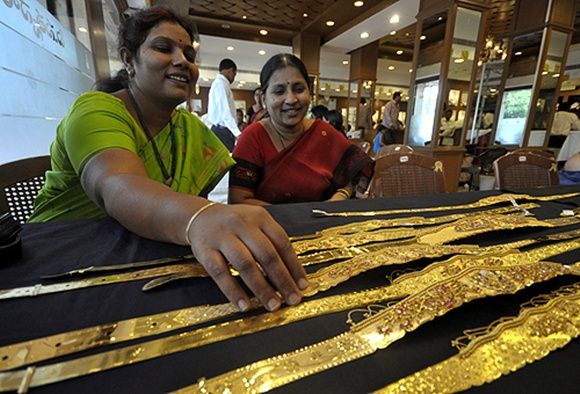With the Bharatiya Janata Party in power at the Centre with majority seats, gold trade between China-India is likely to see friendly policy.
 The geopolitical risk premium and macroeconomic factors continue to buoy gold prices.
The geopolitical risk premium and macroeconomic factors continue to buoy gold prices.
Macros were largely related to the risks in emerging markets as the US reduced its bond purchase to a monthly $55 billion.
However, the ongoing political crisis in Ukraine is a matter of key concern.
On the macro front, growth of the US economy stalled in the first quarter.
However, there has been a sustained decline in the unemployment rate and rise in non-farm payroll numbers.
Though these positives are being attributed to a lower labour participation rate, we don't foresee any major risks that could derail economic recovery in the US.
In contrast, recovery in Europe is still not on a strong footing, as deflation risks continue to be a challenge.
As the European Central Bank tries to counter this risk, the euro could trip against the dollar.
Joining the US in its sustained growth is the UK, where the economy has grown for five straight quarters.
Hot money flows as noticed in the speculative positions in the commodity exchange revealed an addition to net longs since the second week of April but is still below the 2014 high of 145,934 contracts as on March 18.
Gold exchange-traded fund holdings haven't shown any sustained strength and are still down two per cent from the beginning of the year.
The geopolitical climate remains a wild card which could change our downside bias on prices, according to our analyst, Saida Litosh, who tracks the global economy and politics.
Historically, tensions in West Asian regions have provided support to gold prices.
In January 1980, for instance, gold hit an all-time daily high of $850/oz, equal to $2,400/oz in real 2013 terms, after a strong run that started in 1978, boosted significantly by the Soviet Union invasion of Afghanistan and eruptions of war in West Asia.
Iraq's invasion of Kuwait in July/August 1990 generated a bout of safe-haven buying, with the gold price gaining 16 per cent in two months.
Tensions between China and Taiwan in 1996, by contrast, had little impact on the yellow metal, with the markets concentrating more on the prospects of International Monetary Fund sales.
The 2003 invasion of Iraq, among other factors, spurred safe-haven buying, sending gold prices to a four-year high.
The price reached a 26-year high of $730/oz in May 2006, driven by escalating political tensions over Iran's nuclear programme and a weak dollar.
Last year, increased geopolitical tensions in Syria pushed gold prices through $1,400/oz by the end of August, following a steep fall in prices.
Since the beginning of the Ukraine crisis, the price has gained by 15 per cent from the beginning of this year.
However, we suspect the crisis won't push gold prices beyond $1,400 on a sustained basis. Thus, until this event risk blows out of proportion, we expect price to test $1,100 by the end of this year.
Seasonal factors have proved to be good for the physical demand from both China and India this quarter.
With the Bharatiya Janata Party in power at the Centre with majority seats, the trade is likely to see a gold-friendly policy.
While this can make the global bullion trade more intense, prices in India should trend lower.
A possible duty reduction and relaxing the import volumes to at least of 50 to 60 tonnes a month can be heavy on the local premium.
Both these, in addition to a stronger currency, can cause the domestic price to drift lower towards Rs 27,000 before the end of 2014.












 © 2025
© 2025